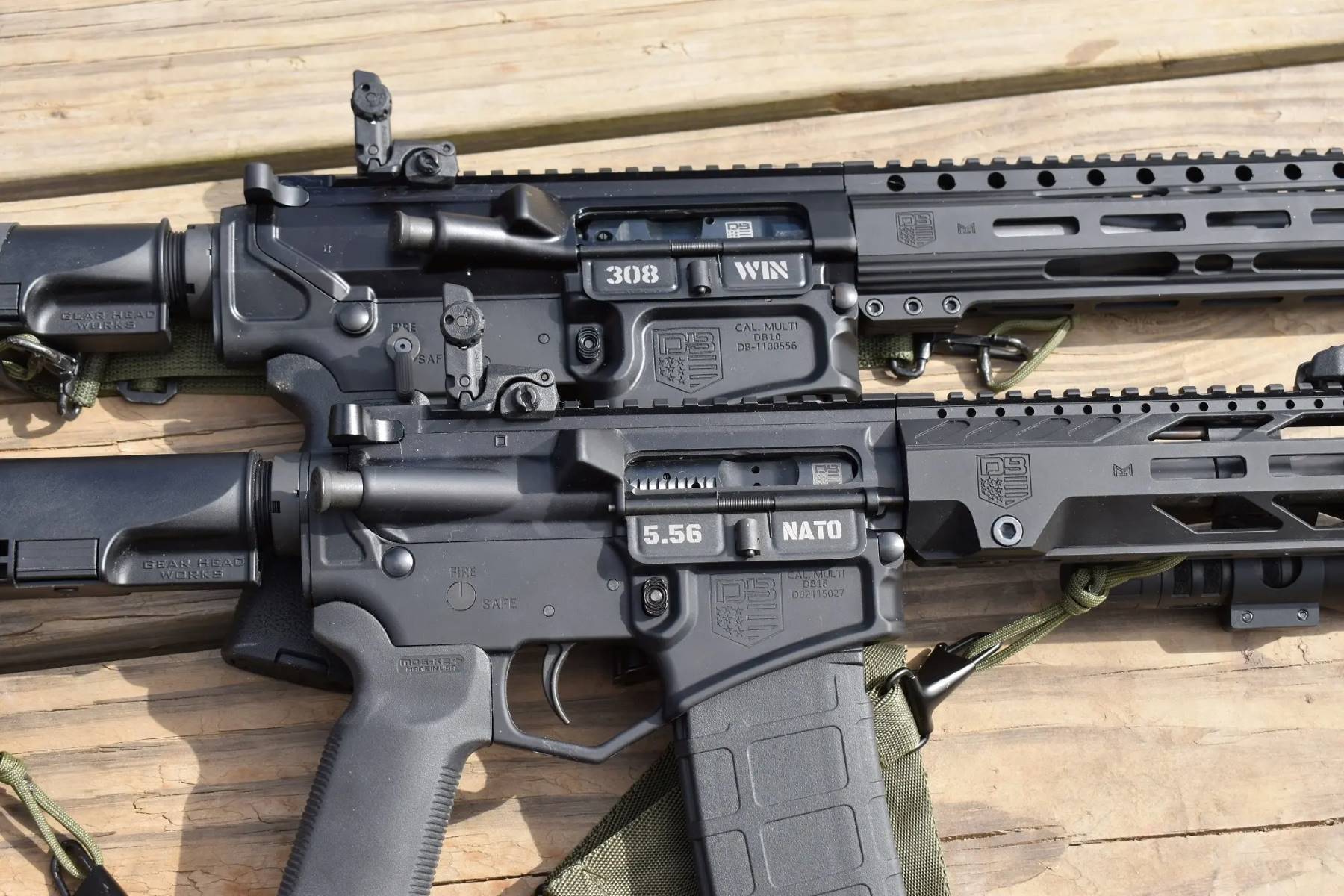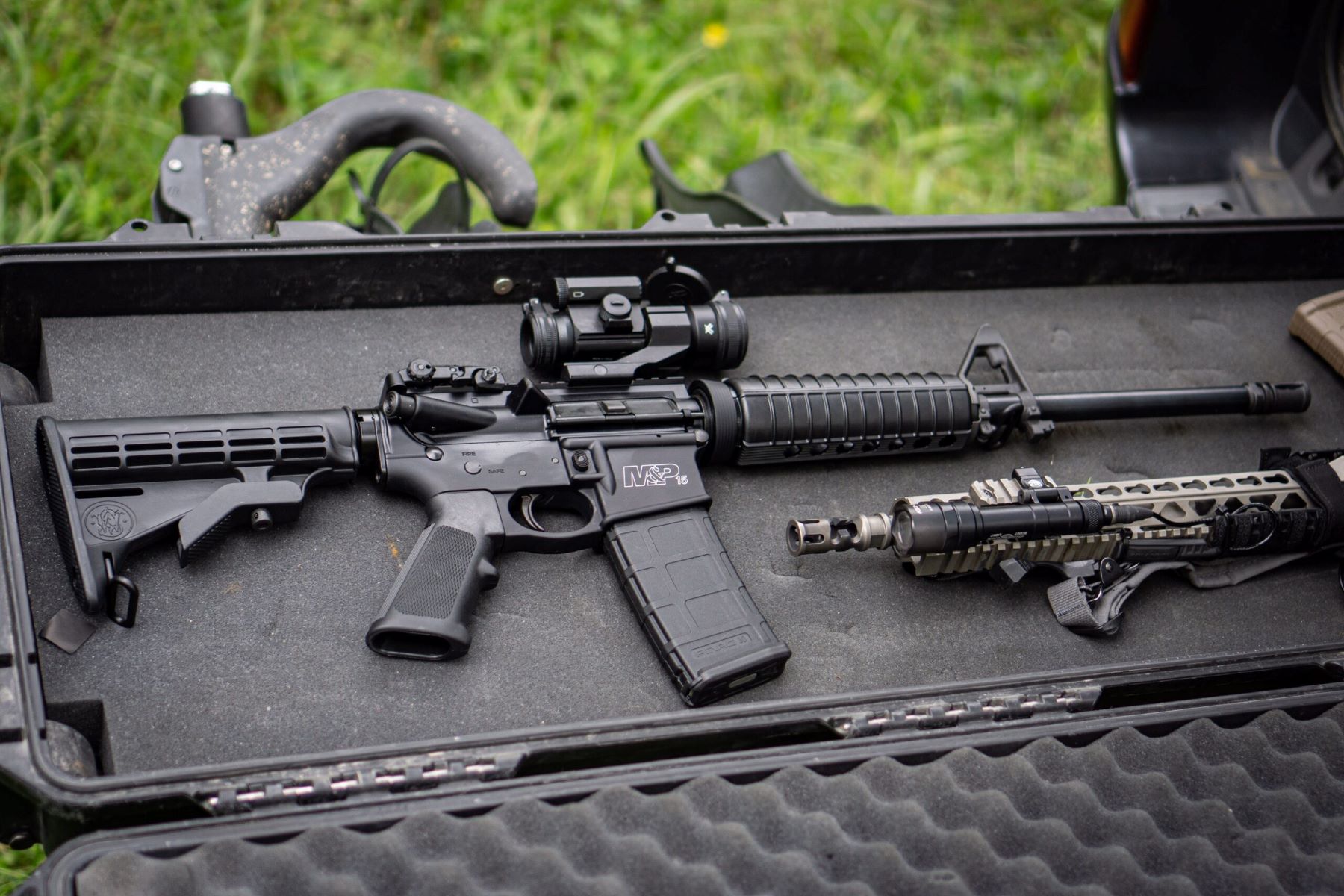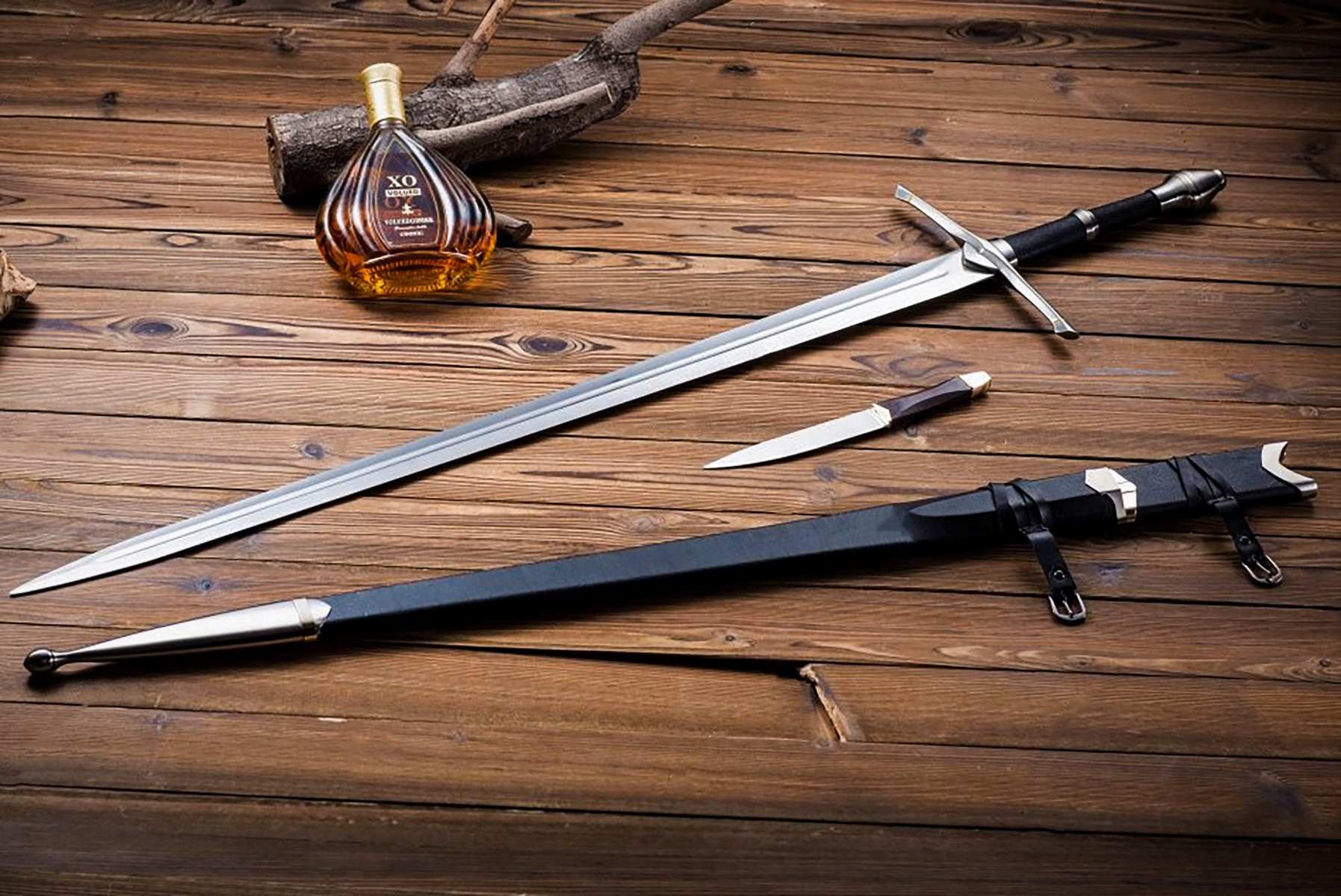Home>Sports>The Ultimate Showdown: AR-10 Vs AR-15 – Unveiling The Perfect All-Purpose Rifle!


Sports
The Ultimate Showdown: AR-10 Vs AR-15 – Unveiling The Perfect All-Purpose Rifle!
Published: January 22, 2024
Discover the key differences between the AR-10 and AR-15 to find the ideal all-purpose rifle for sports. Explore their features and capabilities now!
(Many of the links in this article redirect to a specific reviewed product. Your purchase of these products through affiliate links helps to generate commission for Regretless.com, at no extra cost. Learn more)
Table of Contents
Introduction
The AR-10 and AR-15 are two of the most iconic and versatile rifles in the world of firearms. Both have cemented their place in history and continue to be popular choices among enthusiasts, hunters, and tactical shooters. As we delve into the comparison between these two legendary rifles, we will uncover the distinct features, performance capabilities, and practical applications that make them stand out in their own right.
The AR-10, designed by Eugene Stoner in the late 1950s, was a revolutionary breakthrough in firearm technology. Its development marked a significant departure from traditional battle rifles, as it introduced a lightweight and reliable platform that utilized the innovative concept of a straight-line barrel. This design not only reduced recoil but also enhanced accuracy, setting a new standard for semi-automatic rifles.
In contrast, the AR-15, a derivative of the AR-10, was born out of the need for a smaller caliber rifle that could deliver exceptional performance in a variety of scenarios. Originally developed by Armalite in the 1950s, the AR-15 gained widespread recognition when it was adopted by the U.S. military as the M16. Its adaptability, ease of use, and modular construction have made it a staple in the firearms community, catering to a diverse range of shooting applications.
As we embark on this exploration, we will uncover the intricate details that set these rifles apart and examine the practical implications of their design and performance. Whether you are a seasoned enthusiast seeking to expand your knowledge or a novice looking to understand the nuances of these iconic firearms, this comparison aims to provide a comprehensive insight into the AR-10 and AR-15, ultimately unveiling the perfect all-purpose rifle for your shooting endeavors.
History and Development
The history and development of the AR-10 and AR-15 rifles are deeply intertwined, with each playing a pivotal role in shaping the landscape of modern firearms. The story begins with the AR-10, a groundbreaking creation by Eugene Stoner, an engineer at the renowned Armalite Corporation. In the late 1950s, Stoner set out to design a lightweight, reliable, and accurate rifle that could challenge the conventions of traditional battle rifles. This ambitious endeavor led to the birth of the AR-10, a revolutionary firearm that incorporated innovative engineering principles.
The AR-10's development marked a significant departure from the prevailing firearm design philosophies of the time. Its utilization of aircraft-grade aluminum and advanced composite materials resulted in a remarkably lightweight yet robust platform. Furthermore, the incorporation of a straight-line barrel design not only minimized recoil but also enhanced accuracy, setting a new standard for semi-automatic rifles. Despite its initial limited military adoption, the AR-10's impact on firearms design and its influence on subsequent developments cannot be overstated.
The subsequent evolution of the AR-10 paved the way for the creation of the AR-15, which was born out of the need for a smaller caliber rifle that could offer exceptional performance. Building upon the success of the AR-10, the AR-15 was designed to accommodate the .223 Remington cartridge, a smaller yet potent round that offered improved controllability and reduced weight. This adaptation was a strategic response to the changing dynamics of modern warfare, where maneuverability and versatility were increasingly valued attributes on the battlefield.
The development of the AR-15 gained significant traction when it was adopted by the U.S. military as the M16, a move that propelled it into the spotlight and solidified its reputation as a formidable firearm. The AR-15's modular construction, ease of use, and adaptability further contributed to its widespread acceptance among civilian shooters, law enforcement agencies, and military units worldwide.
In summary, the history and development of the AR-10 and AR-15 rifles are a testament to the ingenuity and forward-thinking vision of their creators. From the revolutionary concepts introduced by the AR-10 to the adaptable and versatile nature of the AR-15, these rifles continue to shape the modern firearms landscape, embodying a legacy that spans decades of innovation and excellence.
Design and Features
The design and features of the AR-10 and AR-15 rifles encapsulate a blend of innovative engineering, ergonomic considerations, and modular adaptability. These rifles are renowned for their distinctive characteristics, each contributing to their exceptional performance and versatility across various shooting applications.
AR-10 Design and Features
The AR-10, conceived by Eugene Stoner, embodies a forward-thinking approach to firearm design. Its lightweight yet robust construction, achieved through the use of advanced materials such as aircraft-grade aluminum and composites, sets it apart from traditional battle rifles. The incorporation of a straight-line barrel design not only reduces recoil but also enhances accuracy, allowing for precise shot placement even during rapid fire sequences. Additionally, the ergonomic layout of the controls and the adjustable stock contribute to a comfortable and intuitive shooting experience.
AR-15 Design and Features
Derived from the AR-10, the AR-15 exhibits a more compact and streamlined design, tailored to accommodate the .223 Remington cartridge. Its modular construction, featuring a detachable upper receiver and a wide array of aftermarket accessories, allows for extensive customization to suit individual preferences. The ergonomic pistol grip and the adjustable shoulder stock enhance handling and comfort, while the incorporation of a gas-operated system ensures reliable cycling of the action, even in adverse conditions.
Differentiating Features
While both rifles share design similarities, their distinct features set them apart. The AR-10, with its larger caliber chambering and robust construction, excels in long-range shooting and hunting applications, where power and accuracy are paramount. On the other hand, the AR-15's lighter weight, maneuverability, and adaptability make it a preferred choice for tactical and sporting purposes, including competitive shooting and law enforcement use.
In essence, the design and features of the AR-10 and AR-15 rifles reflect a harmonious balance of precision engineering and practical functionality. Their distinct characteristics cater to a diverse spectrum of shooting disciplines, cementing their status as iconic and revered firearms in the realm of modern weaponry.
Performance and Ballistics
The performance and ballistics of the AR-10 and AR-15 rifles are integral to understanding their capabilities in various shooting scenarios. These rifles exhibit distinct characteristics that influence their effectiveness in terms of accuracy, range, and terminal ballistics.
AR-10 Performance and Ballistics
The AR-10, chambered in .308 Winchester or 7.62x51mm NATO, delivers formidable performance across long-range shooting applications. Its larger caliber round offers superior energy retention and penetration, making it an ideal choice for hunting large game and engaging targets at extended distances. The straight-line barrel design, coupled with the robust construction, mitigates recoil and facilitates consistent shot placement, contributing to enhanced accuracy and target engagement. Additionally, the AR-10's semi-automatic action enables rapid follow-up shots, further amplifying its effectiveness in dynamic shooting scenarios.
In terms of ballistics, the .308 Winchester round, when fired from the AR-10, exhibits impressive terminal performance, delivering substantial kinetic energy and maintaining trajectory stability over extended distances. This combination of power and precision makes the AR-10 a formidable asset for marksmen and hunters who demand reliable performance in diverse environments and challenging conditions.
AR-15 Performance and Ballistics
The AR-15, utilizing the .223 Remington or 5.56x45mm NATO cartridge, excels in delivering exceptional performance in a compact and lightweight platform. Its smaller caliber round offers reduced recoil and enhanced controllability, making it well-suited for rapid and accurate fire in close to mid-range engagements. The modular construction of the AR-15 allows for effortless customization, catering to individual preferences and specific shooting requirements. Whether utilized in competitive shooting, tactical operations, or recreational plinking, the AR-15's performance capabilities are underscored by its adaptability and reliability.
From a ballistics perspective, the .223 Remington round, when fired from the AR-15, exhibits favorable velocity and flat trajectory, making it well-suited for precise shot placement and target engagement within intermediate distances. The terminal ballistics of this round offer effective energy transfer and fragmentation upon impact, contributing to its efficacy in diverse shooting applications.
Comparative Analysis
When comparing the performance and ballistics of the AR-10 and AR-15, it becomes evident that both rifles are optimized for distinct shooting requirements. The AR-10's emphasis on long-range accuracy and formidable stopping power positions it as an ideal choice for hunting and precision marksmanship, while the AR-15's maneuverability and versatility make it a preferred option for tactical and competitive shooting endeavors.
In essence, the performance and ballistics of the AR-10 and AR-15 rifles underscore their respective strengths, catering to a wide spectrum of shooting disciplines and preferences. Whether it's the raw power and long-range precision of the AR-10 or the agility and adaptability of the AR-15, these rifles embody a harmonious fusion of performance and ballistics, showcasing their enduring relevance in the world of firearms.
Customization and Modifications
Customization and modifications play a pivotal role in enhancing the versatility and adaptability of the AR-10 and AR-15 rifles, allowing users to tailor these firearms to their specific preferences and shooting requirements. Both rifles offer extensive opportunities for customization, encompassing a wide array of aftermarket accessories, upgrades, and modifications that cater to diverse shooting disciplines and individual preferences.
AR-10 Customization and Modifications
The AR-10, renowned for its robust construction and long-range capabilities, lends itself to a myriad of customization options. From precision rifle competitions to hunting expeditions, users can personalize their AR-10 to optimize performance and ergonomics. Common customization options include adjustable precision stocks, match-grade triggers, and specialized optics designed for extended range shooting. Additionally, free-floating handguards, muzzle devices, and bipods can be integrated to enhance stability and improve shot placement. The modularity of the AR-10 platform allows for seamless integration of accessories, enabling users to create a tailored setup that aligns with their shooting preferences and environmental demands.
AR-15 Customization and Modifications
The AR-15, celebrated for its adaptability and modular design, offers an extensive range of customization possibilities. Whether utilized in competitive shooting, law enforcement applications, or recreational plinking, the AR-15 can be personalized to suit individual preferences and specific shooting disciplines. Users can explore a diverse selection of upgrades, including ambidextrous controls, specialized handguards, and adjustable stocks to enhance handling and ergonomics. Furthermore, the ability to interchange barrels, triggers, and optics allows for seamless adaptation to varying shooting environments and scenarios. The AR-15's modular nature and compatibility with a wide range of accessories make it a versatile platform for customization, empowering users to create a personalized firearm that aligns with their unique requirements.
Practical Implications
The customization and modifications available for the AR-10 and AR-15 rifles have practical implications across a spectrum of shooting applications. Whether it's fine-tuning the trigger for precision marksmanship, integrating specialized optics for long-range engagements, or optimizing ergonomics for tactical operations, the ability to customize these rifles enhances their effectiveness in diverse shooting scenarios. Furthermore, the adaptability of both platforms allows users to evolve their firearms to meet changing needs, ensuring that the rifles remain relevant and capable across various shooting disciplines.
In essence, customization and modifications represent an integral aspect of the AR-10 and AR-15 rifles, empowering users to tailor these firearms to their specific preferences and shooting requirements. The extensive range of aftermarket accessories, upgrades, and modifications available for both rifles underscores their adaptability and versatility, reinforcing their status as iconic and revered firearms in the realm of modern weaponry.
Practical Applications
The AR-10 and AR-15 rifles, renowned for their versatility and performance, find practical applications across a diverse spectrum of shooting disciplines. From hunting and precision marksmanship to tactical operations and competitive shooting, these rifles cater to a wide array of practical scenarios, showcasing their adaptability and effectiveness in real-world environments.
Hunting and Precision Marksmanship
The AR-10, with its emphasis on long-range accuracy and formidable stopping power, serves as an ideal companion for hunting large game and engaging targets at extended distances. Whether pursuing big game in open terrain or navigating challenging hunting environments, the AR-10's robust construction and superior ballistics make it a preferred choice among marksmen seeking reliable performance and precision. The ability to customize the AR-10 with specialized optics, adjustable stocks, and match-grade triggers further enhances its suitability for precision marksmanship, allowing users to achieve consistent shot placement and reliable performance in diverse hunting scenarios.
Tactical Operations and Law Enforcement
The AR-15's compact and maneuverable design, coupled with its adaptability and rapid-fire capabilities, positions it as a staple firearm in tactical operations and law enforcement applications. From close-quarters engagements to dynamic urban environments, the AR-15 offers law enforcement personnel and tactical operators a reliable and effective platform for addressing a wide range of operational challenges. The ability to customize the AR-15 with specialized accessories, such as tactical lights, red dot sights, and ambidextrous controls, further amplifies its utility in real-world tactical scenarios, ensuring optimal performance and ergonomics in high-stakes situations.
Competitive Shooting and Recreational Plinking
Both the AR-10 and AR-15 rifles have carved a niche in the realm of competitive shooting and recreational plinking, offering enthusiasts an exhilarating and engaging shooting experience. The AR-15's versatility and modular design make it a popular choice among competitive shooters, allowing for personalized setups tailored to specific shooting disciplines, such as 3-gun competitions or long-range precision matches. Similarly, the AR-10's long-range capabilities and precision-oriented features cater to marksmen seeking a formidable platform for competitive shooting endeavors, where accuracy and consistency are paramount.
In summary, the practical applications of the AR-10 and AR-15 rifles underscore their adaptability and effectiveness across a diverse range of shooting disciplines. Whether it's the AR-10's prowess in hunting and precision marksmanship or the AR-15's utility in tactical operations and competitive shooting, these rifles embody a harmonious fusion of performance and practicality, solidifying their status as iconic and revered firearms in the modern shooting landscape.
Conclusion
In conclusion, the comparison between the AR-10 and AR-15 rifles unveils a captivating narrative of innovation, versatility, and practical excellence. These iconic firearms, rooted in a rich legacy of engineering ingenuity, continue to captivate enthusiasts and marksmen alike, offering a harmonious blend of performance, adaptability, and precision.
The AR-10, with its revolutionary design and long-range prowess, stands as a testament to Eugene Stoner's visionary approach to firearm engineering. Its robust construction, formidable ballistics, and adaptability in hunting and precision marksmanship scenarios underscore its enduring relevance and effectiveness in real-world applications.
Conversely, the AR-15, derived from the AR-10's legacy, embodies a compact and versatile platform that has left an indelible mark on the world of firearms. Its adaptability, rapid-fire capabilities, and suitability for tactical operations and competitive shooting reflect a legacy of excellence and practical utility that has stood the test of time.
The practical implications of these rifles extend beyond their individual attributes, encompassing a diverse spectrum of shooting disciplines. Whether it's the AR-10's prowess in long-range hunting or the AR-15's agility in tactical scenarios, these rifles continue to inspire confidence and deliver exceptional performance in the hands of marksmen and enthusiasts worldwide.
As we navigate the intricacies of firearm design and performance, the AR-10 and AR-15 rifles emerge as timeless embodiments of precision engineering and practical excellence. Their enduring legacy, coupled with their adaptability and versatility, cements their status as iconic and revered firearms in the modern shooting landscape, perpetuating a narrative of innovation and excellence that transcends generations.
In essence, the comparison between the AR-10 and AR-15 rifles not only sheds light on their distinct attributes but also celebrates their enduring relevance and practical significance. Whether it's the AR-10's raw power or the AR-15's adaptability, these rifles continue to resonate with enthusiasts, marksmen, and tactical operators, embodying a legacy that remains as compelling and relevant today as it was during their inception.











